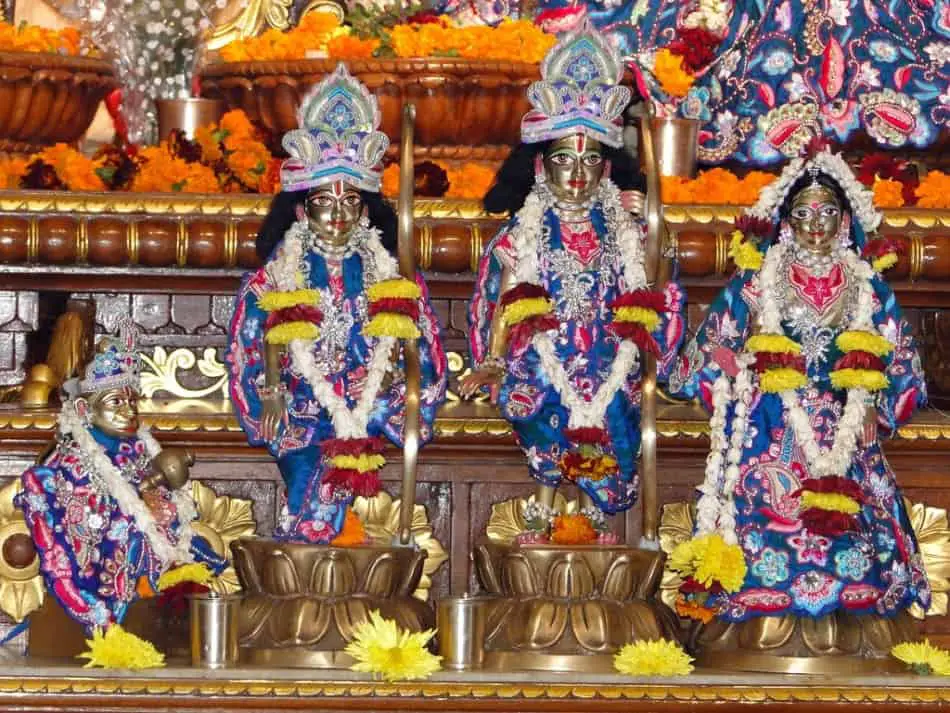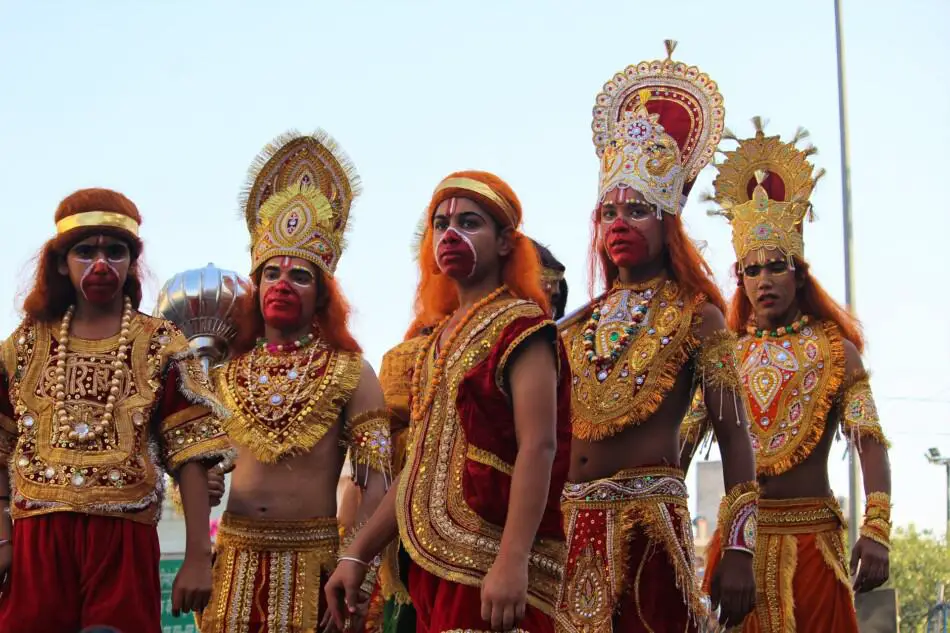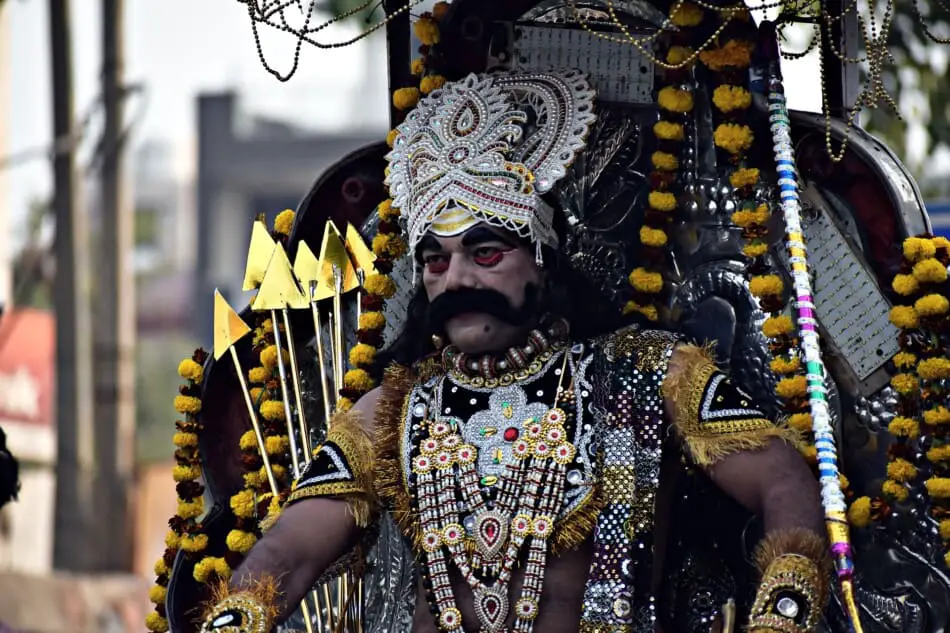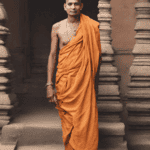One of the two major epics of India is Ramayana while the other is Mahabharata. Ramayana is considered old enough and believed to be held about 19 million years ago. According to Hindu belief, Ramayana occurred in the Treta Yuga which is led by Dwapara Yuga, a consistent period of Mahabharata. In India, various versions and legends are describing the virtue of Rama and his faith. Ramayana was written by sage Valmiki which was later revised by various legendry scholars from other languages.

Rama means the seventh incarnation of Lord Vishnu while Ayana means the path he took presiding his life. According to the saints of this legend, Rama is the epitome of virtue and known for his wise and politeness. He was also known for his love for his parents, step-mother Kaikeyi and his beloved wife Sita. He was born as an elder son to the emperor Dashratha and belongs to the Ikshavagu dynasty. He was born in Ayodhya to the mighty king Dashratha and his eldest wife Kousalya.
Whereas Kaikeyi and Sumitra were been wives of Dashratha that are given birth to Bharatha and the twins Lakshmana and Shatrugna respectively. Sita was born to Janaga in Mithila. It is believed that Sita was the incarnation of Goddess Lakshmi and known for her virtues and its epitome. Just like Rama, she was born along with three siblings to Janaga. Later Sita and her siblings got married to Rama and his siblings respectively.
Rama was asked to exile Ayodhya and to visit deep forests for fourteen years leaving the empire led by his Step-brother Bharatha. Abiding by his father’s words, Rama left his monarchy and marched towards Wildlife along with his beloved wife and brother Lakshmana. It was Kaikeyi that utilized her privilege for rescuing her husband once in the war. She asked Dashratha two privileges for her fortune of saving his life. According to that, she asked Rama to exile Ayodhya while his immediate younger brother Bharatha to led the country.
The story narrates in the way that Rama lost his beloved wife Sita abducted by the ten-headed demon Ravana. On his way to rescue her, Rama faces tricky tactics and subsequent assistance by the crew of monkeys.
According to Hindu mythology, Ramayana teaches goodness of life ignoring evil thoughts and mischievousness. The main protagonist of this story proclaims the victory of goodness against evil and preaches the choice of goodness to his readers.
Content of Ramayana
The whole epic is comprised of 24,000 verses and sub-divided into 6 kands and kand is specific Sanskrit terminology meaning episodes.
The kands are listed out as follows:
- Bala kand
- Ayodhya kand
- Aranya kand
- Kishkinta kand
- Sundara kand
- Lanka kand.
Along with the above-said and there are approximately 500 sargas meant as chapters in Ramayana. Beyond the content footage of original text written by Valmiki, Uttar kand was added later by the scholar Tulsidas. Though Valmiki does not pursue writing this kand Tulsidas insisted, thereby readers happen to read the particular kand along with the other six kands. Every character in the epic is framed in a manner teaching cultural behavior and morals to live.
Below are some general questions regarding Ramayanam/ Ramayana/ Ramayan:
- How old is Ramayana?
It is not possible to predict the actual age of the great epic of India. However, it is expected that the Ramayana period was held in the Treta Yuga that was the same era in which the incarnation of Lord Vishnu occurred in the name of Rama. According to the origin of evolution, Lord Vishnu incarnated the periodically evolving origin of species, especially humans, on earth.
In his seventh incarnation, He chose the evolution of human beings in a developed manner. He lived for the virtues of goodness credited against evil. Based on that concept, Ramayana is believed held approximately 19 million years ago. Hindus believe that Ramayana occurred before Mahabharata as Lord Rama and Lord Krishna lived in two various periods.
- How many years did Sita live?
Sita is the next protagonist most important after Rama and was believed to be the female character filled with virtues of goodness. She was built with moral characters that women bestowed to be figured with. According to Hindu mythology, Sita was raised by Videha king Janaga from the time he found her while plowing the field. Hence, it is proved Sita was the daughter of the earth in other words ‘’Bhumi’’ or ‘’Prithvi’’.
The marriage of Rama and Sita occurred after she turns adolescence and lived in Ayodhya few years. Later when Kaikeyi insisted on Rama’s exile to the forest, she abides by him along with her brother-in-law Lakshman. At the end of fourteen years of exile, Rama was crowned as king presided along with his beloved wife as crown Queen.
Again, Sita was abandoned in the woods to prove her purity for chastity. It was a common man that raised a question about her purity made Rama leave his wife far away from his kingdom. Sita never claims her beloved husband anywhere she starves abandoned in the woods both the time of the exile to the forest. She gave birth to two children named Luv and Kush in the hermitage of Maharshi Vashista whilst her second innings of exile to the forest.
Sita was all alone left abandoned in the woods but never prone to acclaim her husband at any point of his act. Though she was benefitted with reason to the acclaim she never acclaimed and hence been as a woman of earnest qualities.
- Which city is described as the birthplace of the main protagonist Rama?
Lord Rama’s birthplace was known and believed located on the banks of river Sarayu in the City called Ayodhya. The current location of the city is a spot at Utter Pradesh, India. Lord Rama is the seventh incarnation of Lord Vishnu as an answer to the question of who will demolish the ten-headed demon Ravana. His birth was believed to be held on the sacrificial fire (yagna) developed by Dashratha in demand of son for his Ikshavagu dynasty.
Though various disputes and rivalry arise and down debating the birthplace of Lord Rama Hindu mythology insists Ayodhya as the birthplace. Ayodhya was led by Dashratha whose ancestors ruled the empire centuries of years ago. It was Ikshavagu that initiated the dynasty.
- How was Sita born and who are Sita’s parents?
Quite interesting talking about Sita and her birth secrets apart from her love for Lord Rama and Ramayana handled it well. Many contrasting legends are being tales describing the birth of Sita. But one common belief is that she is the incarnation of goddess Lakshmi. Hindu mythology narrates interesting variations describing the birth of Sita and her parents who about.
The very common legend narrates in the manner that Sita was identified by her adopted father once he plows the field. He found a casket buried in the soil and took back to the palace where he found Sita kept inside the casket. Hence, Sita’s adopted parents were known to be king Janaga and his wife Sunaina.
Some other legends stress that Sita was the elder daughter of demon Ravana and his kind-hearted wife Mandothri. Astrologers highlighted that fall of the demon is prone to occur just because of the child yet to born. So, Ravana cascaded his newborn child and ordered to burry far away from his monarchy. The place is where Sita got caught rescued by Janaga.
- Who informs Hanuman that he is indeed capable of jumping over Ocean?
Hanuman, the true follower of Lord Rama, is the key person that performs the risk process of finding Sita’s whereabouts. He was taught all about his abilities to fly across the ocean and travel to Lanka in finding Sita. It is none other than Jambavan who taught Hanuman flying over the ocean.
Jambavan is the sloth bear the ruler of bears and also led the army of monkeys. Only because of the legendry sloth bear’s suggestion Hanuman knew himself and flew away to Lanka.

- How many years did Ravana keep Sita?
Rama exile to forest and lived in a place called Panchavati. About 13 years, the trio was abandoned in the woods. Whist the end of exile, Sita was abducted by Demon Ravana. The actual narration goes like that, one day Ravana found Sita living with her consort Rama and brother-in-law Lakshman. At the moment, he decided to pursue Sita and disguised himself as a deceptive hermit and approached her hut. Sita was all alone at that time, whereas the brothers went on a search of witch deer Maricha.
He abducted Sita pursuing her in his Pushpak and caught red-handed to the old Jadayu. Though Ravana was demon and ten-headed, Jadayu battled severely to rescue Sita. However, Ravana managed to defeat Jadayu deadly and escaped along with Sita to his place Lanka. Not more than a year but for ten months Ravana persuaded Sita.

- How was Luv Kush born?
The crown king Rama exiled his beloved consort, Sita, once again and abandoned her in the woods. Sita was known to be pregnant while she was exiled. However, she decided to abide by Rama’s words and reached Maharshi Vashist hermitage. It was there she gave birth to twin baby boy in delivery and raised them till they turn twelve. The twin brothers were taught by Maharshi Vashist and raised as wise.
- Why did Rama leave Sita?
Rama is a man of good virtues and lived for the happiness of his parents thereafter for the happiness of people. After completion of exile from forest even rescuing Sita from clutches of Demon Ravana, Rama crowned as king of Ayodhya. Everything goes fine until Rama heard from one of the fellowmen being cursed Rama and Sita for their misfortune. He adds up that Sita would prove her purity for chastity by entering the fire. This made Rama much regretted and asked Sita to enter the fire, again for the sake of his fellowmen.
Sita relentlessly decided to leave Ayodhya and left abandoned in the woods once again. It is the custom to fulfill the wish of pregnant women hence Rama was forced leaving Sita. Though he left his beloved consort he never gives up his love for her. Therefore, he refused to remarry even for the cause of conducting Ashwamedha yagna. Rather he made a golden idol of his beloved wife to attend the sacrificial fire ceremony.
- Why do we pray Rama?
As told many times in this article, Rama is known for his goodness and virtues. He remained as the epitome of virtues hence been the reason for worship. He followed the words of his father and came forward giving up all his royal wellbeing. He never picks the alternate way rather being good and also lived for the happiness of his fellow being. People started to worship Rama developing an idol for himself, Goddess Sita, and Lakshman too. The culture of worshiping Rama is being in practice over years ago and even today he is worshiped as the main deity.
- Who ruled Lanka after Vibhishana?
Rama rescued his consort, Sita, from Demon Ravana sided by the Demon but humanly characterized Vibhishana. With the help of Vibhishana and along with an army of monkeys, Rama reached Lanka and defeated Ravana solely. He crowned Vibhishana succeeded by Ravana just because of his human nature. Vibhishana married Sarama, a demoness but known to have good-hearted alike her husband. The couple had a daughter named, Trijata.
Traces of evidence prevails that Vibhishana ruled Lanka for more than a thousand years. The evidence approves that Vibhishana ruled Lanka in the same period of Yudhisthira.
- What is the end of the Ramayana?
Hopefully, there is no end for Ramayana. It is not linear by cyclic to repeat again and again. As Sita descends to mother earth, Rama felt he was left all alone. He never blames his fellowmen but suffered a lot for his beloved Sita.
He came to know that he nears his end and the time arrived to bid Goodbye! He brought his twin children Luv, Kush back to his kingdom and announced that they were the next king to be crowned. Hindu mythology believes that Rama will be to live once there raise his need to save fellow beings.
- How many types of Ramayana are there?
Noteworthy classification of Ramayana does not exist but various versions are created and spread all over the world. It is well claimed that Maharshi Valmiki was the contemporary of Lord Rama and written the Indian epic poem Ramayana, very first. Later it was revised in various languages in and around India and its neighboring countries. Burma, Indonesia, Laos, Thailand, and many Asian countries have their versions of Ramayana written in their native language.
Tulsidas from the Northern part of India and Kambar from the Southern part of India is the notable authors from motherland honored with greatness for rewriting the original text of Ramayana.
- Who wrote Ramayana and in which language was it written?
Maharshi Valmiki, a pure sage, was the author of Ramayana was credited as the recognized author of Ramayana. He chose Sanskrit as the media of language to write Ramayana which was later rewritten in various other Indian languages. Also, Sanskrit was the official language in the ancient period or the period of Lord Rama. Hindus believe that Sanskrit was divine language and been as the mother tongue of aristocrat families and kingdoms.
- Where is the original Ramayana kept?
Ramayan is the original version was written in the contemporary age of Lord Rama. Hence, it is estimated that the age of Ramayana is 19- 21 Million years. However, the existence of the original version is practically impossible hence newly revised versions and editions arose luckily. One among them was the latest version of Tulsidas and that to be estimated written in the 15th century.
However, evidence approves that the 6th century Ramayana found exists in the Library of Kolkata.
